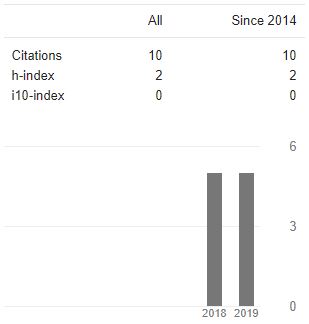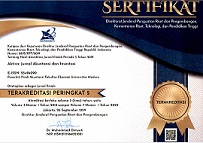EVALUASI PERLAKUAN AKUNTANSI DAN PENERAPAN SAK SYARI’AH UNTUK MEMENUHI KEWAJARAN LAPORAN KEUANGAN ENTITAS SYARI’AH PADA PT. BPR SYARI’AH SPM PAMEKASAN
Abstract
Keywords
Full Text:
PDFReferences
Al-quranul Karim, Diterjemahkan, PT. Sari Agung, Jakarta, April 2002.
Ascarya dan Yumanita, Diana, (2005), Bank Syari’ah: Gambaran Umum, Seri kebanksentralan No 14, Bank Indonesia, Jakarta.
Ikatan Akuntansi Indonesia, (2007), Pernyataan Standar Akuntansi Keuangan 59, tentang Akuntansi Perbankan Syari’ah, Salemba Empat, Jakarta.
Muhammad, (2005), Pengantar Akuntansi Syari’ah, Edisi 2, Salemba Empat, Jakarta.
Perwataatmadja, Karnaen dan Antonio, Muhammad Syafi’I, (1992), Apa dan Bagaimana Bank Islam, Dana Bhakti Wakaf, Yogyakarta.
Soemarso, (1994), Akuntansi Suatu Pengantar, Edisi Baru, PT. Rineka Cipta, Jakarta.
Sumitro, Warkum, (2004), Asas-asas Perbankan Islam dan Lembaga-lembaga Terkait (BMUI, Takaful, Pasar Modal) di Indonesia, PT. RajaGrafindo Persada, Jakarta.
Suwardjono, (1994), Akuntansi Pengantar, Edisi Kedua, BPFE, Yogyakarta.
Suryabrata, Sumadi, (2005), Metodologi Penelitian, PT. RajaGrafindo Persada, Jakarta.
Wiyono, Slamet, (2005), Cara Mudah Memahami Akuntansi Perbankan syari’ah Berdasar PSAK dan PAPSI, Grasindo, Jakarta.
DOI: http://dx.doi.org/10.53712/aktiva.v2i1.154
Refbacks
- There are currently no refbacks.
Indexing:
Member Of:
Reference Manager:
Published by Prodi Akuntansi Fakultas Ekonomi Universitas Madura
Jl. Raya Panglegur Km 3,5 Pamekasan
Phone: (0324) 322231
website: http://ejournal.unira.ac.id/index.php/jurnal_aktiva/index
Email: jaa.unira@gmail.com
AKTIVA by Universitas Madura is licensed under a Creative Commons Attribution 4.0 International License.












